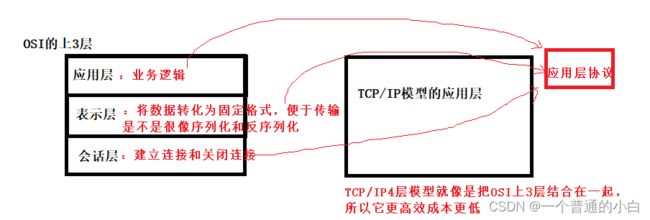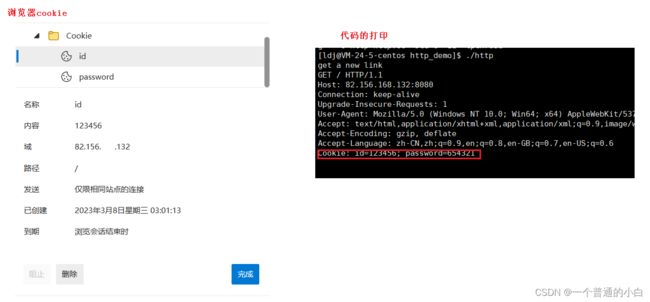- ffmpeg可执行程序裁剪
lxkj_2024
ffmpegffmpeg
需求最近我们在嵌入式板子上有一个需求,拉取网络摄像头的rtsp流保存为jpg/png图片,我们准备借助ffmpeg命令行工具去完成,命令行实现这个功能很简单,但是编译出的ffmpeg可执行程序的大小很大,因此我们尝试对ffmpeg可执行程序进行编译裁剪,最终我们发现按照下面方法后进行裁剪后的大小只有之前的1/4不到,解决了我们遇到的问题。实现编译ffmpeg的步骤包括下面三步./configure
- Facebook 隐私防线:如何抵御数据泄露风险浪潮
ClonBrowser
Facebookfacebook数据安全隐私保护
随着数字化时代的到来,社交平台已成为我们日常生活的一部分,而Facebook作为全球最大的社交网络之一,其隐私保护问题始终备受关注。在过去的几年里,Facebook经历了几次严重的数据泄露事件,造成了用户信息的泄露和平台声誉的受损。随着网络安全威胁的日益增多,Facebook如何加强隐私防线、抵御数据泄露风险成为了公众和业界高度关注的问题。数据泄露的现实威胁数据泄露事件在社交平台中并非孤立事件。F
- electron打包客户端在rk3588上支持h265硬解
lxkj_2024
electron视频编解码
目录前言chromium是如何支持h265硬解electron/chromium第一次编译electron/chromium第二次编译前言我们的客户端程序是用electron打包的前端程序,其在rk3588主机上的linux环境运行。之前使用客户端查看h264编码的视频直播是没有问题的,但视频源更改为h265编码后就不能查看了,奇怪的是打包的windows客户端则可以正常查看,另外rk3588主机
- YOLOv8改进策略【Backbone/主干网络】| 替换骨干网络为2023-CVPR ConvNeXt V2 (附网络详解和完整配置步骤)
Limiiiing
YOLOv8改进专栏YOLO深度学习计算机视觉目标检测
一、本文介绍本文记录的是将ConvNeXtV2应用到YOLOv8中的改进方法研究。本文将ConvNeXtV2应用于YOLOv8,一方面利用全卷积掩码自动编码器在训练时优化特征学习,减少模型对大规模标注数据的依赖;另一方面,通过全局响应归一化层增强特征竞争,缓解特征坍塌问题,提高特征多样性。本文在YOLOv8的基础上配置了原论文中convnextv2_atto,convnextv2_femto,co
- Python 爬虫中的反爬策略及详细应对方法
winner8881
python爬虫开发语言
在构建Python爬虫的过程中,网站为了保护自身资源和用户体验,常常会采取一系列反爬策略来限制或阻止自动化程序的访问。了解这些策略对于设计更智能、更合规的爬虫至关重要。以下是详细的反爬措施及其应对方法:1.User-Agent检测策略描述:许多网站会检查HTTP请求头中的User-Agent字段,以判断请求是否来自浏览器。如果发现是来自非标准用户代理(如Python默认的requests库),可能
- 1. Python Web 框架要点
徐红珍
pythondjango
PythonWeb框架要点1.Web应用程序处理流程2.Web程序框架的意义用于搭建Web应用程序免去不同Web应用相同代码部分的重复编写,只需关心Web应用核心的业务逻辑实现3.Web应用程序的本质接收并解析HTTP请求,获取具体的请求信息处理本次HTTP请求,即完成本次请求的业务逻辑处理构造并返回处理结果——HTTP响应百度ip地址:14.215.177.394.Web框架学习方法如何搭建工程
- 38个基于Python的Web 开发框架
快乐星球没有乐
python前端数据库
Web开发是Python应用中重要的一部分,下面总结了38个基于Python的Web开发框架!其中有的历史悠久,有的发展迅速,还有的已经停止维护,大家可以根据情况参考学习。1Django框架官网:https://github.com/django/django.gitDjango是一个开放源代码的Web应用框架,由纯Python写成,是目前Python语言中主流de三大Web框架之一(flask、
- 反爬技术详解:守护数据的网络之盾
MySheep.
爬虫文章爬虫python
随着互联网的快速发展,网络爬虫技术在数据采集和分析领域的应用越来越广泛。然而,爬虫行为也对网站服务器的稳定性、数据隐私及商业利益造成了威胁。为了应对这些挑战,反爬技术应运而生。本篇文章将详细介绍反爬技术的概念、常用方法以及实际应用场景。一、反爬技术的意义反爬技术旨在保护网站数据免遭未经授权的访问,同时维护服务器的性能与正常用户体验。通过阻止恶意爬虫的访问,网站可以:保护敏感数据:防止数据被非法采集
- Python 简单爬虫教程
ANTennaaa
Pythonpython
就是突然想玩一下这里是一个下载网页内图片的例子环境Python3.7需首先安装pipinstalllxml-ihttps://mirrors.aliyun.com/pypi/simple#fromurllib.requestimporturlretrieve#第一种方法importrequests#第二种方法frombs4importBeautifulSoup'''Ifthetargetdirec
- 华为OD机试 - 最长广播效应 - 广度优先搜索BFS(Python/JS/C/C++ 2024 C卷 200分)
哪 吒
华为od宽度优先python
华为OD机试2024E卷题库疯狂收录中,刷题点这里专栏导读本专栏收录于《华为OD机试真题(Python/JS/C/C++)》。刷的越多,抽中的概率越大,私信哪吒,备注华为OD,加入华为OD刷题交流群,每一题都有详细的答题思路、详细的代码注释、3个测试用例、为什么这道题采用XX算法、XX算法的适用场景,发现新题目,随时更新。一、题目描述某通信网络中有N个网络结点,用1到N进行标识。网络中的结点互联互
- 华为OD机试 - 可以组成网络的服务器 - 深度优先搜索(Python/JS/C/C++ 2024 D卷 200分)
哪 吒
华为od服务器深度优先
华为OD机试2024E卷题库疯狂收录中,刷题点这里专栏导读本专栏收录于《华为OD机试真题(Python/JS/C/C++)》。刷的越多,抽中的概率越大,私信哪吒,备注华为OD,加入华为OD刷题交流群,每一题都有详细的答题思路、详细的代码注释、3个测试用例、为什么这道题采用XX算法、XX算法的适用场景,发现新题目,随时更新。一、题目描述在一个机房中,服务器的位置标识在n*m的整数矩阵网格中,1表示单
- 华为OD机试 - RSA加密算法(Python/JS/C/C++ 2024 E卷 100分)
哪 吒
华为odpythonjavascript
华为OD机试2024E卷题库疯狂收录中,刷题点这里专栏导读本专栏收录于《华为OD机试真题(Python/JS/C/C++)》。刷的越多,抽中的概率越大,私信哪吒,备注华为OD,加入华为OD刷题交流群,每一题都有详细的答题思路、详细的代码注释、3个测试用例、为什么这道题采用XX算法、XX算法的适用场景,发现新题目,随时更新,全天CSDN在线答疑。一、题目描述RSA加密算法在网络安全世界中无处不在,它
- Python 中 ssl 模块所使用的 OpenSSL 版本(1.0.2k-fips)和系统中 openssl 命令所使用的 OpenSSL 版本(1.1.1u)不一致(已解决)
Future_yzx
pythonssl开发语言
在使用Linux中配置yolov5环境时遇到问题:[root@iZ2ze9bdu1sca12rizazfkZqcby-project]#python3-c"importssl;print(ssl.OPENSSL_VERSION)"OpenSSL1.0.2k-fips 26Jan2017[root@iZ2ze9bdu1sca12rizazfkZqcby-project]#opensslversion
- Python 四大主流 Web 编程框架_python web开发主流
2401_87373506
python前端php
在目前Python语言的几十个开发框架中,几乎所有的全栈网络框架都强制或引导开发者使用MVC架构开发Web应用。所谓全栈网络框架,是指除了封装网络和线程操作,还提供HTTP栈、数据库读写管理、HTML模板引擎等一系列功能的网络框架。本文重点讲解的Django、Tornado和Flask是全栈网络框架的典型标杆;而Twisted更专注于网络底层的高性能封装而不提供HTML模板引擎等界面功能,所以不能
- 实验八 数据的增删改操作
无尽罚坐的人生
#数据库原理数据库
实验八数据的增删改操作一、实验目的1.掌握ManagementStudio的使用。2.掌握SQL中INSERT、UPDATE、DELETE命令的使用。二、实验内容及要求用SQL语句完成下列功能。使用数据库为SCHOOL数据库。1、新开设一门课程,名叫网络安全与防火墙,学时40,编号为“0118”,主要介绍网络的安全与主要的防火墙软件。insertcourse(course_id,course_na
- 网站结构优化:加速搜索引擎收录的关键
百度网站快速收录
搜索引擎
本文来自:百万收录网原文链接:https://www.baiwanshoulu.com/9.html网站结构优化对于加速搜索引擎收录至关重要。以下是一些关键策略,旨在通过优化网站结构来提高搜索引擎的抓取效率和收录速度:一、合理规划网站架构采用扁平化结构:减少网站的层级深度,使搜索引擎爬虫能够更快速地遍历和抓取网站内容。这有助于确保每个页面都能被搜索引擎有效地索引。分类清晰:对于内容丰富的网站,应合
- 实现网站内容快速被搜索引擎收录的方法
百度网站快速收录
搜索引擎
本文转自:百万收录网原文链接:https://www.baiwanshoulu.com/6.html实现网站内容快速被搜索引擎收录,是网站运营和推广的重要目标之一。以下是一些有效的方法,可以帮助网站内容更快地被搜索引擎发现和收录:一、确保内容质量与原创性高质量内容:搜索引擎更倾向于收录提供高质量、有价值内容的网站。因此,要确保网站内容独特、有深度,能够满足用户的需求和兴趣。原创性:原创内容是搜索引
- Python 爬虫入门的教程(1小时快速入门、简单易懂、快速上手)_一小时入门 python 3 网络爬虫
2401_86372526
python爬虫深度优先
首先在PyCharm中安装requests库,为此打开PyCharm,单击“File”(文件)菜单,选择“SettingforNewProjects…”命令,如图4所示。图4选择“ProjectInterpreter”(项目编译器)命令,确认当前选择的编译器,然后单击右上角的加号,如图5所示。图5在搜索框输入:requests(注意,一定要输入完整,不然容易出错),然后单击左下角的“Install
- java.net.SocketTimeoutException: Read timed out
KK_crazy
java.netphp
全套面试题已打包2024最全大厂面试题下载引言在进行网络编程时,我们经常会遇到java.net.SocketTimeoutException:Readtimedout异常,这个异常通常在网络通信过程中出现,给开发者带来了一定的困惑。本文将深入解析SocketTimeoutException异常的原因,并提供一些避免该异常的策略。什么是SocketTimeoutException异常?SocketT
- 【reflex】Python一种更直观和高效的方式来管理事件流模块
山河不见老
python开发语言
reflex1、简介2、安装3、特性4、基本功能4.1创建和触发基本事件4.2动态事件绑定5、高级功能5.1异步事件处理5.2事件优先级和调度5.3事件过滤和条件触发6、实际应用场景6.1用户界面事件处理6.2网络事件响应6.3系统信号处理7、总结1、简介在软件开发过程中,事件驱动编程模型越来越受欢迎,尤其是在处理复杂的系统和实时交互时。Reflex是一个轻量级的Python库,它专注于简化事件驱
- com.alibaba.excel.exception.ExcelGenerateException: Create workbook failure
蝶衣_疯魔
踩坑记录javaEasyExcel
Execel生成异常:创建工作簿失败场景1我的bug产生场景1:使用EasyExcel作导出的时候,抛出的这个异常。我导入的是xls后缀的文件导出部分代码:publicvoidhtDrXz(HttpServletResponseresponse){log.info("----------导入模板下载----------");ClassPathResourceresource=newClassPat
- 网上FLAC3D学习笔记
lqlong19922008
FLAC数值模拟primitiveplotinterfacefilterinitable
建议:初学者将FLAC/FLAC3D版所有帖子都浏览一遍;学有所得后,再浏览一遍,会发现又有新的收获。第一部分(相关链接)1.FLAC3D知识基本介绍SimWehttp://www.simwe.com/forum/viewthread.php?tid=209662http://www.simwe.com/forum/viewthread.php?tid=573644http://www.simwe
- 探索Reflex:用纯Python构建高性能Web应用
倪姿唯Kara
探索Reflex:用纯Python构建高性能Web应用项目地址:https://gitcode.com/gh_mirrors/re/reflex项目介绍Reflex,前身为Pynecone,是一个革命性的开源库,允许开发者使用纯Python构建全栈Web应用。Reflex的核心理念是简化Web开发的复杂性,通过提供一个统一的框架,让开发者能够专注于业务逻辑而非技术细节。无论是初学者还是经验丰富的开
- 机器学习:利用sklearn实现心脏病预测
薄化克Oswald
机器学习:利用sklearn实现心脏病预测机器学习sklearn实现心脏病预测项目地址:https://gitcode.com/Resource-Bundle-Collection/171ff欢迎使用本资源仓库,本项目专注于利用Python的sklearn库进行心脏病预测的机器学习实践。通过详尽的步骤和示例代码,本项目为你展示了如何应用不同的机器学习算法来分析心脏病数据集,并预测患者是否有可能患有
- 探索灵活高效的UI开发新境界:Reflex库
荣正青
探索灵活高效的UI开发新境界:Reflex库reflexjsAlibraryforrapidUIdevelopmentwithstyleprops,colormodes,themesandvariants+starterkits,themesandblockstohelpyoubuildGatsbyandNext.jssitesfaster.项目地址:https://gitcode.com/gh_
- 探索Reflex:纯Python打造高性能web应用的未来
孔岱怀
探索Reflex:纯Python打造高性能web应用的未来去发现同类优质开源项目:https://gitcode.com/在快速迭代的Web开发领域,寻找一种既高效又能让开发者以熟悉的方式工作的框架至关重要。今天,我们来深入了解一个革新性的开源项目——Reflex,它承诺让你在纯Python的环境中构建响应式web应用,并且能在几秒钟内完成部署。1.项目介绍Reflex是一个新兴的全栈web框架,
- python | cudf,一个超实用的 Python 库!
双木的木
python拓展学习python库python开发语言人工智能深度学习算法database数据分析
本文来源公众号“python”,仅用于学术分享,侵权删,干货满满。原文链接:cudf,一个超实用的Python库!大家好,今天为大家分享一个超实用的Python库-cudf。Github地址:https://github.com/rapidsai/cudf在数据分析和科学计算领域,Pandas是最常用的Python工具之一,然而随着数据规模的增长,其单线程CPU的处理性能往往成为瓶颈。cuDF是N
- 【嵌入式面试】2024年嵌入式经典面试题汇总(Linux 文件IO)_嵌入式linux面试题
2401_83704192
程序员嵌入式
Linux主要通过shell命令进行安装。可以使用apt方式安装(软件包管理系统)、rpm包安装、deb包安装、tar.gz源代码包安装、tar.bz2源代码包安装、yum方式安装(安装rpm包)、bin文件安装。1.8占用系统资源linux是字符界面,占用的系统资源较于windows下的图形界面所占的资源小。Windows是图形界面,较于Linux的字符界面所占的资源大。参考链接2Linux的根
- python | reflex,一个无敌的 Python 库!
双木的木
深度学习拓展阅读python库python拓展学习python开发语言算法人工智能深度学习硬件工程异步
本文来源公众号“python”,仅用于学术分享,侵权删,干货满满。原文链接:reflex,一个无敌的Python库!大家好,今天为大家分享一个无敌的Python库-reflex。Github地址:https://github.com/reflex-dev/reflex在软件开发过程中,事件驱动编程模型越来越受欢迎,尤其是在处理复杂的系统和实时交互时。Reflex是一个轻量级的Python库,它专注
- ctf python大法好_【技术分享】记CTF比赛中发现的Python反序列化漏洞
weixin_39631370
ctfpython大法好
预估稿费:200RMB投稿方式:发送邮件至linwei#360.cn,或登陆网页版在线投稿写在前面的话在前几天,我有幸参加了ToorConCTF(https://twitter.com/toorconctf),而在参加此次盛会的过程中我第一次在Python中发现了序列化漏洞。在我们的比赛过程中,有两个挑战中涉及到了能够接受序列化对象的Python库,而我们通过研究发现,这些Python库中存在的安
- 面向对象面向过程
3213213333332132
java
面向对象:把要完成的一件事,通过对象间的协作实现。
面向过程:把要完成的一件事,通过循序依次调用各个模块实现。
我把大象装进冰箱这件事为例,用面向对象和面向过程实现,都是用java代码完成。
1、面向对象
package bigDemo.ObjectOriented;
/**
* 大象类
*
* @Description
* @author FuJian
- Java Hotspot: Remove the Permanent Generation
bookjovi
HotSpot
openjdk上关于hotspot将移除永久带的描述非常详细,http://openjdk.java.net/jeps/122
JEP 122: Remove the Permanent Generation
Author Jon Masamitsu
Organization Oracle
Created 2010/8/15
Updated 2011/
- 正则表达式向前查找向后查找,环绕或零宽断言
dcj3sjt126com
正则表达式
向前查找和向后查找
1. 向前查找:根据要匹配的字符序列后面存在一个特定的字符序列(肯定式向前查找)或不存在一个特定的序列(否定式向前查找)来决定是否匹配。.NET将向前查找称之为零宽度向前查找断言。
对于向前查找,出现在指定项之后的字符序列不会被正则表达式引擎返回。
2. 向后查找:一个要匹配的字符序列前面有或者没有指定的
- BaseDao
171815164
seda
import java.sql.Connection;
import java.sql.DriverManager;
import java.sql.SQLException;
import java.sql.PreparedStatement;
import java.sql.ResultSet;
public class BaseDao {
public Conn
- Ant标签详解--Java命令
g21121
Java命令
这一篇主要介绍与java相关标签的使用 终于开始重头戏了,Java部分是我们关注的重点也是项目中用处最多的部分。
1
- [简单]代码片段_电梯数字排列
53873039oycg
代码
今天看电梯数字排列是9 18 26这样呈倒N排列的,写了个类似的打印例子,如下:
import java.util.Arrays;
public class 电梯数字排列_S3_Test {
public static void main(S
- Hessian原理
云端月影
hessian原理
Hessian 原理分析
一. 远程通讯协议的基本原理
网络通信需要做的就是将流从一台计算机传输到另外一台计算机,基于传输协议和网络 IO 来实现,其中传输协议比较出名的有 http 、 tcp 、 udp 等等, http 、 tcp 、 udp 都是在基于 Socket 概念上为某类应用场景而扩展出的传输协
- 区分Activity的四种加载模式----以及Intent的setFlags
aijuans
android
在多Activity开发中,有可能是自己应用之间的Activity跳转,或者夹带其他应用的可复用Activity。可能会希望跳转到原来某个Activity实例,而不是产生大量重复的Activity。
这需要为Activity配置特定的加载模式,而不是使用默认的加载模式。 加载模式分类及在哪里配置
Activity有四种加载模式:
standard
singleTop
- hibernate几个核心API及其查询分析
antonyup_2006
html.netHibernatexml配置管理
(一) org.hibernate.cfg.Configuration类
读取配置文件并创建唯一的SessionFactory对象.(一般,程序初始化hibernate时创建.)
Configuration co
- PL/SQL的流程控制
百合不是茶
oraclePL/SQL编程循环控制
PL/SQL也是一门高级语言,所以流程控制是必须要有的,oracle数据库的pl/sql比sqlserver数据库要难,很多pl/sql中有的sqlserver里面没有
流程控制;
分支语句 if 条件 then 结果 else 结果 end if ;
条件语句 case when 条件 then 结果;
循环语句 loop
- 强大的Mockito测试框架
bijian1013
mockito单元测试
一.自动生成Mock类 在需要Mock的属性上标记@Mock注解,然后@RunWith中配置Mockito的TestRunner或者在setUp()方法中显示调用MockitoAnnotations.initMocks(this);生成Mock类即可。二.自动注入Mock类到被测试类 &nbs
- 精通Oracle10编程SQL(11)开发子程序
bijian1013
oracle数据库plsql
/*
*开发子程序
*/
--子程序目是指被命名的PL/SQL块,这种块可以带有参数,可以在不同应用程序中多次调用
--PL/SQL有两种类型的子程序:过程和函数
--开发过程
--建立过程:不带任何参数
CREATE OR REPLACE PROCEDURE out_time
IS
BEGIN
DBMS_OUTPUT.put_line(systimestamp);
E
- 【EhCache一】EhCache版Hello World
bit1129
Hello world
本篇是EhCache系列的第一篇,总体介绍使用EhCache缓存进行CRUD的API的基本使用,更细节的内容包括EhCache源代码和设计、实现原理在接下来的文章中进行介绍
环境准备
1.新建Maven项目
2.添加EhCache的Maven依赖
<dependency>
<groupId>ne
- 学习EJB3基础知识笔记
白糖_
beanHibernatejbosswebserviceejb
最近项目进入系统测试阶段,全赖袁大虾领导有力,保持一周零bug记录,这也让自己腾出不少时间补充知识。花了两天时间把“传智播客EJB3.0”看完了,EJB基本的知识也有些了解,在这记录下EJB的部分知识,以供自己以后复习使用。
EJB是sun的服务器端组件模型,最大的用处是部署分布式应用程序。EJB (Enterprise JavaBean)是J2EE的一部分,定义了一个用于开发基
- angular.bootstrap
boyitech
AngularJSAngularJS APIangular中文api
angular.bootstrap
描述:
手动初始化angular。
这个函数会自动检测创建的module有没有被加载多次,如果有则会在浏览器的控制台打出警告日志,并且不会再次加载。这样可以避免在程序运行过程中许多奇怪的问题发生。
使用方法: angular .
- java-谷歌面试题-给定一个固定长度的数组,将递增整数序列写入这个数组。当写到数组尾部时,返回数组开始重新写,并覆盖先前写过的数
bylijinnan
java
public class SearchInShiftedArray {
/**
* 题目:给定一个固定长度的数组,将递增整数序列写入这个数组。当写到数组尾部时,返回数组开始重新写,并覆盖先前写过的数。
* 请在这个特殊数组中找出给定的整数。
* 解答:
* 其实就是“旋转数组”。旋转数组的最小元素见http://bylijinnan.iteye.com/bl
- 天使还是魔鬼?都是我们制造
ducklsl
生活教育情感
----------------------------剧透请原谅,有兴趣的朋友可以自己看看电影,互相讨论哦!!!
从厦门回来的动车上,无意中瞟到了书中推荐的几部关于儿童的电影。当然,这几部电影可能会另大家失望,并不是类似小鬼当家的电影,而是关于“坏小孩”的电影!
自己挑了两部先看了看,但是发现看完之后,心里久久不能平
- [机器智能与生物]研究生物智能的问题
comsci
生物
我想,人的神经网络和苍蝇的神经网络,并没有本质的区别...就是大规模拓扑系统和中小规模拓扑分析的区别....
但是,如果去研究活体人类的神经网络和脑系统,可能会受到一些法律和道德方面的限制,而且研究结果也不一定可靠,那么希望从事生物神经网络研究的朋友,不如把
- 获取Android Device的信息
dai_lm
android
String phoneInfo = "PRODUCT: " + android.os.Build.PRODUCT;
phoneInfo += ", CPU_ABI: " + android.os.Build.CPU_ABI;
phoneInfo += ", TAGS: " + android.os.Build.TAGS;
ph
- 最佳字符串匹配算法(Damerau-Levenshtein距离算法)的Java实现
datamachine
java算法字符串匹配
原文:http://www.javacodegeeks.com/2013/11/java-implementation-of-optimal-string-alignment.html------------------------------------------------------------------------------------------------------------
- 小学5年级英语单词背诵第一课
dcj3sjt126com
englishword
long 长的
show 给...看,出示
mouth 口,嘴
write 写
use 用,使用
take 拿,带来
hand 手
clever 聪明的
often 经常
wash 洗
slow 慢的
house 房子
water 水
clean 清洁的
supper 晚餐
out 在外
face 脸,
- macvim的使用实战
dcj3sjt126com
macvim
macvim用的是mac里面的vim, 只不过是一个GUI的APP, 相当于一个壳
1. 下载macvim
https://code.google.com/p/macvim/
2. 了解macvim
:h vim的使用帮助信息
:h macvim
- java二分法查找
蕃薯耀
java二分法查找二分法java二分法
java二分法查找
>>>>>>>>>>>>>>>>>>>>>>>>>>>>>>>>>>>>>>
蕃薯耀 2015年6月23日 11:40:03 星期二
http:/
- Spring Cache注解+Memcached
hanqunfeng
springmemcached
Spring3.1 Cache注解
依赖jar包:
<!-- simple-spring-memcached -->
<dependency>
<groupId>com.google.code.simple-spring-memcached</groupId>
<artifactId>simple-s
- apache commons io包快速入门
jackyrong
apache commons
原文参考
http://www.javacodegeeks.com/2014/10/apache-commons-io-tutorial.html
Apache Commons IO 包绝对是好东西,地址在http://commons.apache.org/proper/commons-io/,下面用例子分别介绍:
1) 工具类
2
- 如何学习编程
lampcy
java编程C++c
首先,我想说一下学习思想.学编程其实跟网络游戏有着类似的效果.开始的时候,你会对那些代码,函数等产生很大的兴趣,尤其是刚接触编程的人,刚学习第一种语言的人.可是,当你一步步深入的时候,你会发现你没有了以前那种斗志.就好象你在玩韩国泡菜网游似的,玩到一定程度,每天就是练级练级,完全是一个想冲到高级别的意志力在支持着你.而学编程就更难了,学了两个月后,总是觉得你好象全都学会了,却又什么都做不了,又没有
- 架构师之spring-----spring3.0新特性的bean加载控制@DependsOn和@Lazy
nannan408
Spring3
1.前言。
如题。
2.描述。
@DependsOn用于强制初始化其他Bean。可以修饰Bean类或方法,使用该Annotation时可以指定一个字符串数组作为参数,每个数组元素对应于一个强制初始化的Bean。
@DependsOn({"steelAxe","abc"})
@Comp
- Spring4+quartz2的配置和代码方式调度
Everyday都不同
代码配置spring4quartz2.x定时任务
前言:这些天简直被quartz虐哭。。因为quartz 2.x版本相比quartz1.x版本的API改动太多,所以,只好自己去查阅底层API……
quartz定时任务必须搞清楚几个概念:
JobDetail——处理类
Trigger——触发器,指定触发时间,必须要有JobDetail属性,即触发对象
Scheduler——调度器,组织处理类和触发器,配置方式一般只需指定触发
- Hibernate入门
tntxia
Hibernate
前言
使用面向对象的语言和关系型的数据库,开发起来很繁琐,费时。由于现在流行的数据库都不面向对象。Hibernate 是一个Java的ORM(Object/Relational Mapping)解决方案。
Hibernte不仅关心把Java对象对应到数据库的表中,而且提供了请求和检索的方法。简化了手工进行JDBC操作的流程。
如
- Math类
xiaoxing598
Math
一、Java中的数字(Math)类是final类,不可继承。
1、常数 PI:double圆周率 E:double自然对数
2、截取(注意方法的返回类型) double ceil(double d) 返回不小于d的最小整数 double floor(double d) 返回不大于d的整最大数 int round(float f) 返回四舍五入后的整数 long round










